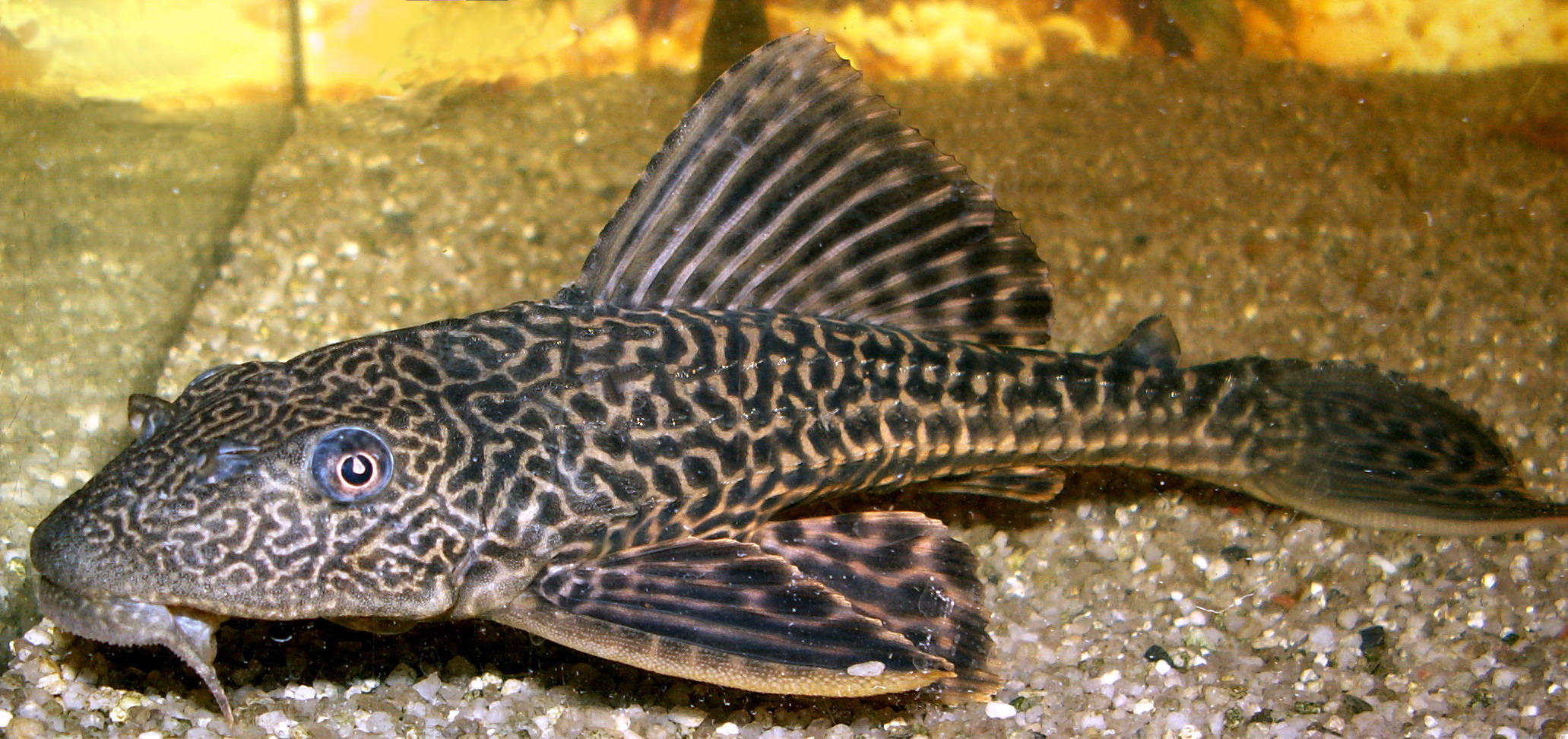- Pterygoplichthys multiradiatus
Taxobox
name = "P. multiradiatus"

image_width = 240px
regnum =Animal ia
phylum = Chordata
classis =Actinopterygii
ordo =Siluriformes
familia =Loricariidae
genus = "Pterygoplichthys "
species = "P. multiradiatus"
binomial = "Pterygoplichthys multiradiatus"
binomial_authority = (Hancock, 1828)"Pterygoplichthys multiradiatus" is a
tropical fish known as aPlecostomus belonging to the armored catfish family (Loricariidae ). Named for its sail-likedorsal fin , the part of its scientific name "multiradiatus" means "many-rayed" and refers to the rays of thedorsal fin . "P. multiradiatus" is one of a number of species commonly referred to as thecommon pleco byaquarist s.FishBase_species|genus=Pterygoplichthys|species=multiradiatus|year=2004|month=September]Other scientific names that were used (as synonyms) for "P. multiradiatus" include "Hypostomus multiradiatus", "Ancistrus multiradiatus", and "Liposarcus multiradiatus". "P. multiradiatus" is sometimes confused with "
Pterygoplichthys pardalis ", which is a different species of pleco. "P. multiradiatus" goes by a number of common names. It can be called the "long-fin armored catfish" inHawaii , "sailfin catfish ", "sailfish catfish", "many-rayed (multiradiatus) pleco" or "radiated ptero" in theUSA , and 多輻翼甲鯰 inMandarin Chinese ."P. multiradiatus" is mottled brown/black and inhabits freshwater streams and lakes and in weedy, mud-bottomed canals in its native habitat: the
Orinoco River basin inSouth America . Its geographic distribution is 10°N - 1°N, 68°W - 61°W. This tropical, nocturnal bottom-dweller likes warm water at the temperature range of 23 - 27°C, pH range: 6.5 - 7.8, and dH range: 4 - 20."P. multiradiatus" browses on substrate, mainly feeding on
benthic algae and aquatic weeds, but will also take worms, insect larvae and other bottom-dwelling invertebrates as food.One of the large plecos (growing to a maximum of 50 cm), this species likes solitude, is relatively peaceful as an aquarium fish and does well with
cichlids and other big fish, and should be kept in large tanks only and with plenty of rocks and driftwood in which to hide."P. multiradiatus" is not of interest in the fisheries, but is very important, as with many of the
pleco s, in the aquarium trade.
Wikimedia Foundation. 2010.
